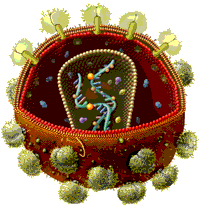Museum, University of Nebraska State

World of Viruses
Document Type
Article
Date of this Version
8-2013
Citation
Published in Public Understanding of Science (2013); doi: 10.1177/0963662513496954
Abstract
Humans are exposed to viruses everywhere they live, play, and work. Yet people’s beliefs about viruses may be confused or inaccurate, potentially impairing their understanding of scientific information. This study used semi-structured interviews to examine people’s beliefs about viruses, vaccines, and the causes of infectious disease. We compared people at different levels of science expertise: middle school students, teachers, and professional virologists. The virologists described more entities involved in microbiological processes, how these entities behaved, and why. Quantitative and qualitative analyses revealed distinctions in the cognitive organization of several concepts, including infection and vaccination. For example, some students and teachers described viral replication in terms of cell division, independent of a host. Interestingly, most students held a mental model for vaccination in which the vaccine directly attacks a virus that is present in the body. Our findings have immediate implications for how to communicate about infectious disease to young people.
Included in
Immunology and Infectious Disease Commons, Medical Education Commons, Translational Medical Research Commons, Virus Diseases Commons


Comments
Copyright © 2013 Benjamin D. Jee, David H. Uttal, Amy Spiegel, & Judy Diamond. Published by Sage Publications. Used by permission.